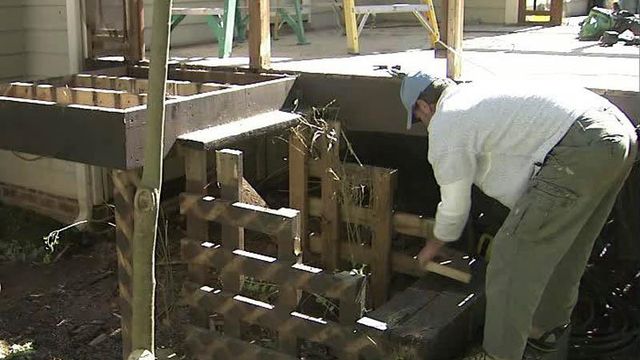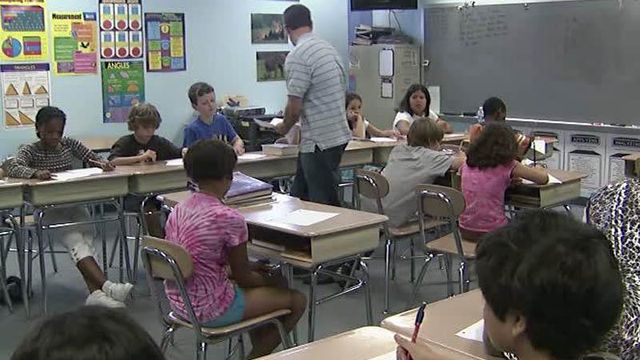Days after Obama visit, NC sees jobless rate inch up
Days after President Barack Obama stumped in North Carolina for his jobs proposals, officials reported Friday that the state's unemployment rate edged up in September.
Posted — UpdatedThe state Employment Security Commission reported that the jobless rate was 10.5 percent, up from 10.4 percent in August. The rate is the highest in a year and a half and remains far above the national average of 9.1 percent.
The number of unemployed people statewide increased by 4,498 in September, to 473,937, while the number of people with jobs increased by 1,324, to 4,032,376, according to the ESC.
Obama says his jobs proposals would put thousands of North Carolina teachers, police officers, construction workers and others back to work. The U.S. Senate rebuffed his American Jobs Act last week and defeated a portion this week that called for giving money to local governments for hiring after the president decided to introduce the measure piecemeal. The Senate next plans to take up a $60 billion proposal for infrastructure improvements nationwide.
North Carolina's construction industry showed the greatest gains in September, adding 2,800 jobs, while the public sector lost 13,700 jobs and the financial industry dropped 3,000, the ESC reports.
Michael West, who has worked in construction for years, said he went into business for himself when the industry collapsed in the sub-prime mortgage meltdown a few years ago.
"It's been pretty bad up until about six months ago," West said, noting he's recently been nailing down jobs like tearing down a screened porch and replacing it with a multi-level deck.
"I'm seeing work come after work, which I haven't seen in the last three or four years," he said.
Permits for new home construction in Wake County soared 89 percent, from 222 in January to 420 in August, while permits for home additions and remodeling jumped 69 percent, from 314 to 533, in the same period.
Still, employment experts said they don't believe single-family homes are driving the market.
"I think we're seeing much more multi-use apartments," said Jeff Stocks of staffing company Manpower. "Many families are just looking for flexibility, and we're seeing construction go up in that area."
Another Manpower executive, Jonas Prising, said the unemployment picture is more stark when looking at people's education and skills levels.
"The unemployment rate for those with a college degree is 4.7 percent in September on a nationwide basis. For those without a high school diploma, it's 18 or 19 percent," Prising said. "So, you're seeing a very strong divergence between those (who) have skills that are in demand and those (who) don't have the skills or have been out of the workforce for a long time."
West said he just hopes the worst is behind him.
"I don't want to jinx anything, (but) yeah, it's looking much better," he said. "It's easier now to think about vacations and those kinds of things because we're able to set some money back, which is good."
Government job losses mount
In the past year, private-sector jobs in North Carolina have increased by 28,400, while state and local governments have shed 18,700 jobs.
Federal government added about 100 jobs and the state 2,600 jobs in September, but local governments cut 16,400 jobs from their payrolls – a nearly 4 percent drop in one month – many of them teachers.
The North Carolina Department of Public Instruction reported last month that more than 4,000 teachers and teaching assistants were cut in the state budget that took effect in July. Nearly half were people who were laid off.
Republican lawmakers said those numbers were preliminary and predicted that most laid-off teachers would be rehired.
"Of course (school districts) would like to rehire them, but I'm not getting a lot of feedback that they are doing a lot of that now," Philip Price, DPI's chief financial officer, said Friday.
According to the ESC, there were 15,700 fewer education jobs in North Carolina in September than a year ago. Price said, however, that DPI doesn't have figures on teaching positions statewide because local districts decide how many people to hire with the per-student money provided by the state. Also, federal and local funds pay for some teaching positions.
"We usually are set up to report in December what is the enrollment picture out there," he said. "We have 200,000-plus people employed in our public schools, so it's difficult to pick a point in time and gather that information."
Sheri Strickland, president of the North Carolina Association of Educators, said she expects the state will find that a large chuck of the lost government jobs belonged to teachers.
"I'm sure that many of those we will find out were teacher jobs because the locals ended up with such a large discretionary cut," Strickland said. "Given the cuts that they've sustained over the past couple of years, they were left with nowhere to go but to people."
The state's unemployment rate increase between July and August was one of the sharpest in the country, behind only Illinois and Pennsylvania – two other states in which manufacturing has been a big employer.
North Carolina has lost 289,300 non-farm jobs since the recession began in December 2007, with manufacturers shedding nearly one out of five positions, or 99,300 jobs in that time.
• Credits
Copyright 2024 by WRAL.com and the Associated Press. All rights reserved. This material may not be published, broadcast, rewritten or redistributed.






